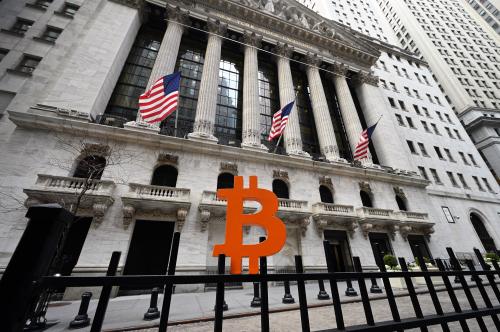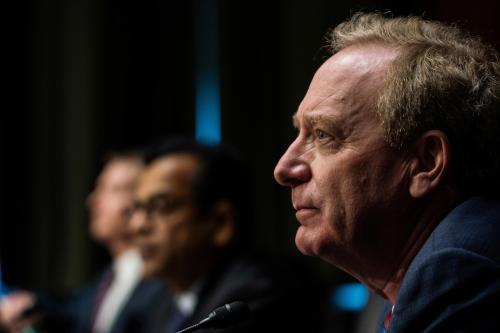Hermès makes the very exclusive line of Birkin handbags, which routinely sell for prices exceeding—in many cases, far exceeding—$10,000. The company was therefore none too pleased when digital artist Mason Rothschild started selling nonfungible tokens (NFTs) in the form of digital images he termed MetaBirkins, each of which depicts a furry, artistically-colored Birkin-shaped handbag sitting atop a pedestal. In January, Hermès filed a trademark claim against Rothschild in a New York federal court.
The lawsuit, which presents allegations including trademark infringement and dilution, raises a set of fascinating issues at the intersection of intellectual property law and digital technology. In considering those issues, it’s helpful to first take a step back and provide a brief primer on NFTs and on trademarks.
NFTs and trademarks
NFTs are digital identifiers that use blockchain technology to authenticate and track ownership of an associated digital asset. The digital asset—such as a digital work of art or a short video clip of a sports play—might be freely available online, but because NFTs are by definition nonfungible, the ownership of the asset can lie with only one person at a time. This creates a marketplace for trading NFTs, some of which can be extraordinarily expensive. In March 2021, “Everydays: The First 5000 days,” a digital work by the artist Beeple, sold at a Christie’s auction for over $69 million.
Under U.S. law, a trademark is “any word, name, symbol, or device . . .” used by a person “to identify and distinguish his or her goods, including a unique product, from those manufactured or sold by others and to indicate the source of the goods.” Trademark law plays a key role in preventing consumers from being confused about who actually makes a product. For example, an entrepreneur is free to found a startup company with the goal of manufacturing and selling athletic shoes, but not to name the new company “Nike,” or something confusingly similar such as “Nikee.”
U.S. trademark law also protects trade dress, which as the US Patent and Trademark Office (in turn quoting prior court rulings) explains, “is usually defined as the ‘total image and overall appearance’ of a product, or the totality of the elements, and ‘may include features such as size, shape, color or color combinations, texture, graphics.’” In relation to handbags, Hermès has registered U.S. trademarks both on the word “BIRKIN” and on the trade dress associated with a Birkin bag.
Trademark rights and the First Amendment
Trademark rights give companies an important tool to protect their investments in building goodwill among consumers regarding their products and services. But trademark law is not the only legal framework at issue in the Hermès lawsuit. There is also the First Amendment, which confers broad expressive rights for artists to produce works that incorporate content associated with third-party intellectual property. Perhaps the most well-known example is Andy Warhol’s portrayals of soup cans and other products made by Campbell’s—works of art that rapidly acquired iconic status and helped to define the Pop Art movement.
Courts have long recognized the importance of ensuring that trademark claims are not used to strip artists and commentators of their expressive First Amendment rights. In 1989 in Rogers v. Grimaldi, the U.S. Court of Appeals for the Second Circuit, which sets precedent for the New York federal district court where the Hermès lawsuit was filed, ruled on a case brought by Hollywood star Ginger Rogers. Rogers had accused the makers of the film “Ginger and Fred” of choosing a title that violated her rights under the Lanham Act—the primary federal trademark statute.
In ruling against Rogers, the Second Circuit found that the title “Ginger and Fred” was “artistically relevant” to the film’s content, and “not explicitly misleading.” The court explained that “[b]ecause overextension of Lanham Act restrictions in the area of titles might intrude on First Amendment values, we must construe the Act narrowly to avoid such a conflict.” More generally, the court wrote, the Lanham Act should “apply to artistic works only where the public interest in avoiding consumer confusion outweighs the public interest in free expression.”
There are multiple other cases, in the Second Circuit and beyond, that have recognized the right to use trademarks when engaging in artistic and creative expression involving parody and other commentary. As the Fourth Circuit explained in a 2005 decision, “Congress left little doubt that it did not intend for trademark laws to impinge the First Amendment rights of critics and commentators.”
That said, the rights of artists, critics, and commentators do not extend so far as to permit them to confuse consumers regarding whether the content in question was created by the trademark owner. A key question for the district court in Hermès v. Rothschild will therefore be: How do Rothschild’s MetaBirkins measure up when evaluated against what the Second Circuit in a different case called the “ultimate test in trademark law, namely, the likelihood of confusion” regarding the source of the NFTs?
Trademark rights in virtual spaces: some key questions
Specifics aside, Hermès v. Rothschild underscores the potential complexity of trademark rights in virtual spaces. While there is a large body of case law involving trademarks in traditional offline contexts, it won’t always be clear how to best analogize those cases to virtual representations. As NFTs, digital goods, and metaverse spaces continue to rise in popularity, trademark law questions including the following will arise with increasing frequency:
- What is the scope of trademark rights in virtual spaces, particularly in relation to new fact patterns for which there may be no good offline analogs in the case law? The lack of clarity poses challenges both for trademark owners and for artists and others who create content in virtual spaces implicating third-party trademarks. Artists do not want to be dragged into court over their artwork, and would clearly benefit from more legal clarity regarding what constitutes infringement. But trademark owners are also in an unenviable position. On the one hand, they want to avoid expensive and potentially unpopular litigation. On the other hand, they have a duty to monitor and enforce unauthorized use of their trademarks. Monitoring the online space is difficult given the sheer volume and complexity of online content, and failure to enforce trademarks can have the de-facto consequence of narrowing their scope.
- Under some fact patterns, can third party trademark uses in virtual spaces presumptively involve a lower likelihood of consumer confusion? For example, suppose an artist exhibits a work of art in a virtual space depicting a product (or a word or image that evokes a product) that consumers know is only sold by its manufacturer in physical form. Does that distinction reduce the likelihood of confusion—and therefore weigh against a finding of trademark infringement? Or is the virtual/physical distinction of little relevance to the analysis?
- How, if at all, should virtual spaces impact questions regarding fair use?
- What are the liability exposures for online intermediaries that host potentially trademark-infringing content posted in virtual spaces by third parties? Section 230, the statute that exempts online intermediaries from liability for most content posted by their users, has a list of exceptions that includes federal (and possibly state) intellectual property laws. Trademarks are principally addressed at the federal level through the Lanham Act. This means that Section 230 does not insulate intermediaries from liability claims regarding trademarks. And while the Digital Millennium Copyright Act lays out a procedure—and associated safe harbor—designed specifically for online intermediaries to respond to allegations of hosting content that infringes copyright, there is no corresponding statutory framework with respect to trademarks. In addition, there is little case law regarding intermediary liability in relation to trademarks (the 2010 Second Circuit decision in Tiffany v. eBay is one example, though its broader applicability is limited), and many of the related issues remain unresolved.
- What are the international implications of trademark rights in virtual spaces? In traditional, non-online contexts, international trademark law is already complex. In a world where online content is often created in one country, hosted online in a second country, and then accessed in a third country, how should jurisdictional differences in the nature and scope of virtual trademark rights be addressed?
Engaging with these questions will require striking the right balance between trademark scope and the First Amendment. Trademarks on non-virtual goods will need to confer protection against third party uses in virtual spaces that will confuse consumers. At the same time, trademark owners should not be granted overly expansive interpretations of trademark law in virtual spaces that would impede artistic expression. Many of the uses in virtual spaces of words or imagery that might contain, suggest, or evoke a trademark will be art, not trademark infringement.
The Brookings Institution is committed to quality, independence, and impact.
We are supported by a diverse array of funders. In line with our values and policies, each Brookings publication represents the sole views of its author(s).









Commentary
NFTs and Birkin bags: A Hermès lawsuit tests the limits of trademark rights
April 21, 2022